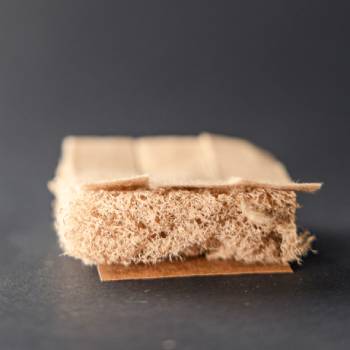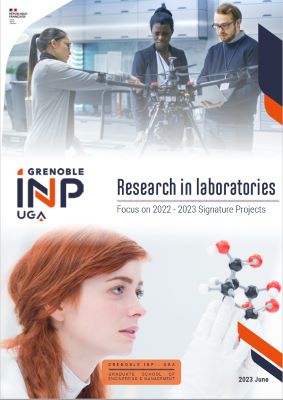
The sanitary products currently available on the market pose major environmental issues: approximately 50% of their components are made from oil-based materials. Components such as the non-woven top layer, the impermeable underlying layer, and superabsorbent materials (that can absorb up to 600 times their mass in liquid) are responsible for build-up of non-biodegradable waste.
At the same time, 500 million women worldwide are facing period poverty, often with no access to safe and affordable sanitary products. This issue is particularly acute in certain regions of the world where access to products is limited and taboos around menstruation persist, leading to mass landfilling of these products.
An economical and sustainable solution
The aim of the Napkins project is to create sanitary towels made only from bio-based fully-biodegradable materials. To achieve this, researchers are required to take up several technical challenges, particularly developing a structure that’s humidity-resistant despite using hydrophilic materials.
The works rely on the project partners’ complementary skills: LGP2 for paper-making processes and cellulose foams, CEMEF for polysaccharide superabsorbent materials, 3SR to study the physical properties of fibre-like materials, and LERMAB to prepare lignocellulosic raw materials particularly processed via steam explosion of fibres. Together, they explore different solutions to simplify manufacturing processes and render them tailorable to a range of materials.

Local materials
To reduce environmental footprint and guarantee maximum product accessibility, the materials used must be available locally. Bamboo, recognised for its antimicrobial properties, high lignin content and accessibility in many regions of the world, was selected for the first experiments. Other fibres such as linen, wood, and date palm, will also be studied.
The Napkins project plans to use a single material for all three layers of the towel: a soft porous surface layer, a cellulose foam-based absorbent layer, and an impermeable underlying layer.
The first experiments, carried out with bamboo and cotton, resulted in manufacturing of absorbent layers with promising results, particularly in terms of the density and porosity of the materials produced. However, certain aspects, such as liquid retention, require further improvements. “We need to achieve full impermeability and better retention,” underlines Cécile Sillard, LGP2 engineer and project coordinator. “A trainee particularly worked on the underlying layer using a heat-pressing process, enabling production of a denser but still too water permeable structure.” The project, which will officially start in January 2025, provides for funding over 48 months to perfect these technical solutions with the launch of two theses and two post-doctorate research projects.
An open science approach
The Napkins project isn’t just innovating on a technical level: it also sets itself apart with its open science philosophy. The researchers chose not to file a patent in order to freely share their results. “We want girls and women worldwide to be able to enjoy affordable, environmentally-friendly sanitary products”. This desire for transparency is part of an approach to democratise research, with the aim of positively influencing industrial practice.
* CNRS / UGA / Grenoble INP - UGA / Agefpi
** CNRS / UGA / Grenoble INP - UGA



